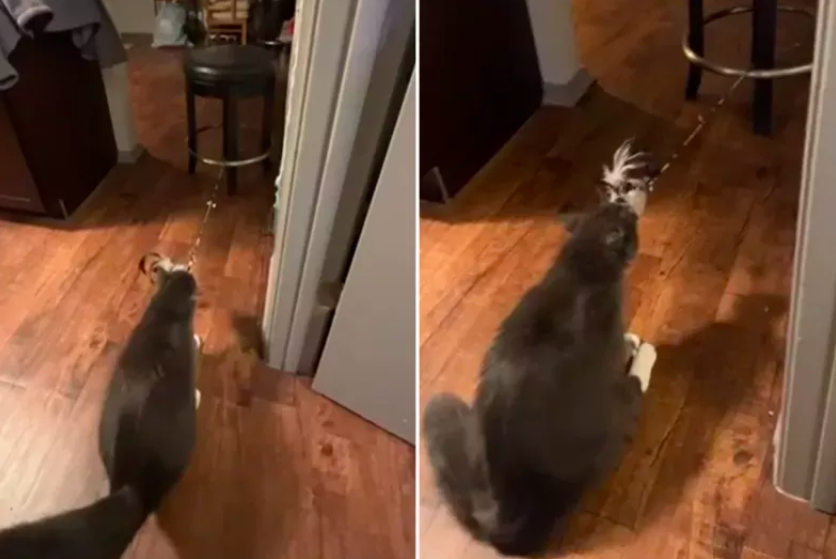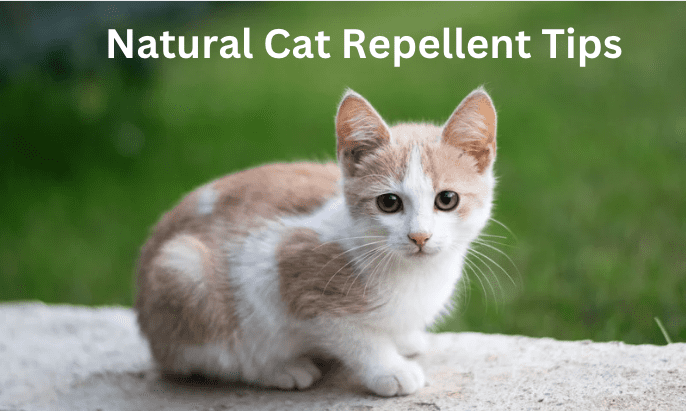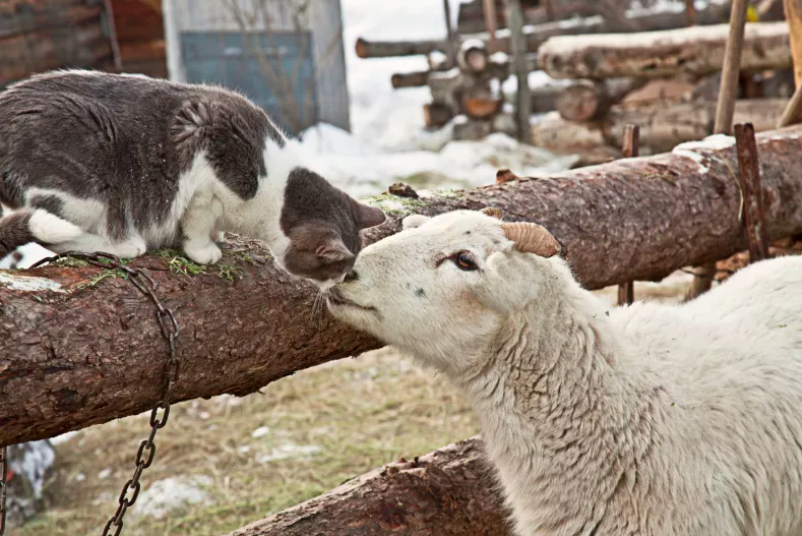Pet Care
Why Do Cats Chase Lasers? The Fascinating Feline Behavior Explained
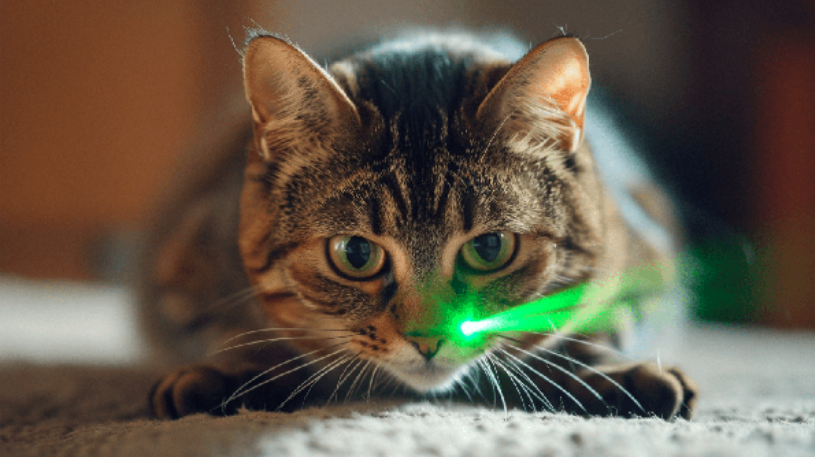
Why Do Cats Chase Lasers? Unveiling the Feline Fascination
Cats, those enigmatic and charming creatures, have a penchant for the mysterious and the elusive. One of the most curious behaviors that leave pet owners scratching their heads in wonder is the infamous laser-chasing phenomenon.
In this comprehensive guide, we’ll delve into the feline psyche and decode why our furry friends can’t resist the allure of those tiny, elusive beams of light.
The Instinctual Hunter: Unleashing the Predator Within
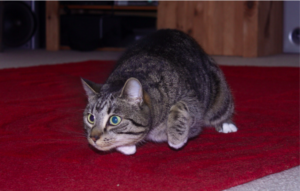
Understanding the Wild Origins
- Ancestral Ties: Domestic cats share a lineage with their wild ancestors who were adept hunters. Exploring this connection provides insights into their instinctual behaviors.
- Survival Skills: The laser’s mimicry of rapid, unpredictable movements mirrors the evasive maneuvers of prey in the wild. This triggers the latent predator instincts, offering your cat a taste of the thrill of the chase.
The Role of Hunting in Domestic Cats
- Inherent Instincts: Despite the cozy confines of domesticity, cats retain their innate hunting instincts. The laser becomes a surrogate prey, allowing them to express these instincts in a controlled environment.
- Hunting as Expression: The act of chasing the laser is not merely a game; it’s an expression of a fundamental aspect of their identity. Understanding this sheds light on the significance of the play in their daily lives.
The Therapeutic Aspect
- Stress Release: Chasing the laser provides an outlet for your cat to release built-up stress and tension. This natural form of therapy allows them to unwind and indulge in a primal activity.
- Emotional Fulfillment: Just as humans find satisfaction in activities that resonate with their instincts, cats experience emotional fulfillment through laser play. It’s not just about the physical chase but also the mental and emotional engagement.
In this exploration of the instinctual hunter within your feline companion, we uncover the deep-rooted connection between their domestic lives and the untamed instincts that lie dormant within them.
The laser becomes a portal, bridging the gap between the cozy living room and the rugged wilderness of their ancestry.
The Science Behind the Chase: A Cat’s Eye View
Understanding the Optical Illusion
- Visual Stimulation: Cats are visually oriented creatures, and the laser’s quick movements provide an irresistible visual stimulus. The pinpoint nature of the light engages their keen eyes, sparking a chase response.
- Prey Mimicry: The laser’s elusive nature mirrors the unpredictability of small prey. This taps into the feline psyche, triggering an instinctual response as your cat perceives the laser dot as potential prey.
Chasing Shadows: The Playful Side
- Shadow Play Appeal: Cats have an innate fascination with shadows and reflections. The laser, with its combination of light and shadow, capitalizes on this fascination, making the chase not just about catching but also the sheer joy of playful engagement.
- Play as Mental Exercise: Beyond the physical aspects, the laser chase provides mental exercise for your cat. The rapid movements challenge their cognitive abilities, keeping their minds sharp and active.
The Allure of Precision
- Precision Hunting: The laser’s pinpoint nature appeals to a cat’s instinct for precise hunting. Cats are meticulous hunters, and the focused dot offers a target that aligns with their natural hunting style.
- Sensory Engagement: Beyond the visual allure, the laser’s movement triggers sensory engagement. The combination of visual, spatial, and tactile stimuli creates a holistic experience, making it a captivating game for your cat.
In delving into the science behind the chase, we uncover the fascinating interplay between a cat’s visual acuity, instinctual responses, and the lure of precise movements.
The laser becomes a catalyst for a multi-sensory experience, providing your feline friend not only with physical exercise but also a mental workout that satisfies their intrinsic curiosity.
The Mental Stimulation: Exercising Body and Mind
Preventing Boredom: A Happy Cat is a Busy Cat
- Boredom’s Toll: Cats, despite their reputation for leisure, can suffer from boredom when confined indoors. The laser chase offers an engaging activity, preventing the onset of feline ennui.
- Cognitive Engagement: The laser’s unpredictable movements require your cat to strategize and plan their next move, providing mental stimulation that goes beyond mere physical exertion.
Physical Exercise: A Stealthy Workout
- Muscle Engagement: The quick sprints, sudden stops, and agile leaps during a laser chase mimic the physical exertion required for hunting. This stealthy workout contributes to your cat’s overall fitness, promoting a healthy lifestyle.
- Cardiovascular Benefits: While the laser game might seem like a light-hearted pursuit, the bursts of activity elevate your cat’s heart rate, ensuring cardiovascular benefits that are essential for their well-being.
Emotional Well-being: Joy in Motion
- Expressing Energy: Cats have abundant energy, and the laser chase allows them to express this energy in a controlled and entertaining manner. It’s a release of pent-up enthusiasm, contributing to emotional well-being.
- Interactive Play: The interactive nature of the game fosters a bond between you and your cat. It’s not just about physical activity; it’s a shared experience that enhances the emotional connection between pet and owner.
In exploring the mental stimulation provided by the laser chase, we unravel the layers of engagement that go beyond a simple game.
It’s a holistic approach that addresses both the mental and physical well-being of your feline companion, ensuring a content and fulfilled life indoors.
The Do’s and Don’ts of Laser Play: Ensuring a Positive Experience
Moderation is Key
- Do: Limit laser play sessions to avoid overstimulation and potential frustration for your cat. Short, focused sessions are ideal for a positive experience.
- Do: Observe your cat’s behavior during and after play. If you notice signs of frustration or stress, it’s time to conclude the session and provide alternative forms of entertainment.
- Don’t: Engage in excessively long laser sessions. Extended play without a tangible reward can lead to frustration and may impact your cat’s overall satisfaction.
Real Rewards: Incorporating Tangible Prey
- Do: Introduce toys that your cat can physically catch and “capture” to provide a sense of accomplishment. This satisfies their hunting instincts and adds a tangible reward to the play.
- Do: Rotate between the laser and physical toys during playtime. This variety ensures a well-rounded experience, preventing your cat from fixating solely on the elusive laser dot.
- Don’t: Rely solely on the laser for play. While it’s a fun and engaging activity, incorporating other toys ensures a balanced playtime routine for your cat.
Avoiding Potential Pitfalls
- Do: Ensure the laser is safe for your cat’s eyes by using a low-powered laser specifically designed for pet play. Avoid aiming the laser directly into their eyes to prevent any accidental harm.
- Do: Provide a satisfying conclusion to the play session by allowing your cat to “catch” a physical toy. This mimics the successful conclusion of a hunt, preventing feelings of unfulfillment.
- Don’t: Shine the laser on reflective surfaces or near breakable objects. Cats may become fixated on reflections, leading to potential accidents or damage.
Supervision and Interaction
- Do: Engage with your cat during laser play. Your active participation strengthens the bond between you and your feline friend, turning it into a shared experience.
- Do: Store the laser pointer securely after play to avoid your cat fixating on it when unsupervised. This prevents obsessive behavior and ensures a healthy playtime routine.
- Don’t: Leave the laser lying around where your cat can access it freely. Unsupervised access may lead to obsessive behavior or unnecessary stress for your pet.
By adhering to these do’s and don’ts, you can transform laser play into a positive and enriching experience for your cat.
Balancing moderation, incorporating tangible rewards, and ensuring safe and supervised interaction will contribute to a happy and fulfilled feline companion.
Frequently Asked Questions (FAQs)
Is it safe for my cat to chase lasers for an extended period?
- While short sessions are harmless, extended play can lead to frustration. Balance laser play with tangible toys to provide a well-rounded experience.
Can laser play replace traditional toys for my cat?
- Laser play is an excellent addition but should not replace tangible toys. Incorporate a mix of toys to ensure physical and mental stimulation.
Why does my cat seem frustrated after a laser session?
- Cats may become frustrated if they can’t catch the elusive dot. Introduce toys they can physically catch to provide a sense of accomplishment.
Can laser play lead to obsessive behavior in cats?
- In rare cases, extended laser play may contribute to obsessive behavior. Monitor your cat’s reactions and ensure a healthy balance with other activities.
How often should I engage my cat in laser play?
- Aim for short, daily sessions to prevent boredom. Supplement laser play with other interactive activities to keep your cat mentally and physically stimulated.
In conclusion, the mystery behind why cats chase lasers lies in their primal instincts, the thrill of the hunt, and the mental and physical stimulation it provides.
As responsible pet owners, understanding the nuances of this seemingly simple playtime activity ensures a happy and fulfilled feline companion. So, grab that laser pointer and let the games begin, unlocking the wild spirit within your domesticated ball of fur.
We appreciate you for taking the time to read this article!
Finally, we hope you found this article interesting? And what do you think about ”!?”
Please feel free to share or inform your friends about this article and this site, thanks!
And let us know if you observe something that isn’t quite right.
Pet Care
Dog Owner Worries All Week Over Fireworks, Can’t Believe His Reaction

Dog Owner Worries All Week Over Fireworks, Can’t Believe His Reaction
Fireworks can be a source of great stress and anxiety for many pets, but one French Bulldog’s unexpected reaction during a firework display has left his owner—and the internet—laughing. The video of the dog’s unbothered demeanor has gone viral, amassing hundreds of thousands of views on TikTok. While many dogs are known to cower or bark at loud explosions, this three-year-old French Bulldog, Tanki, couldn’t be more relaxed. Let’s take a closer look at the hilarious and unexpected way Tanki handled the Bonfire Night fireworks, and why his calm reaction might be a breed-specific trait.
The Unexpected Hero of Bonfire Night: Tanki the French Bulldog
French Bulldogs are known for their unique personalities, and Tanki, the star of this viral video, has certainly lived up to the reputation. Milly Powell, Tanki’s owner, shared a video on TikTok of her dog standing serenely in their garden while fireworks erupted in the background. Rather than running for cover or displaying signs of distress, Tanki looked completely unfazed. This video quickly became a hit, with over 942,000 views, as viewers found it both surprising and hilarious that Tanki seemed to enjoy the loud, colorful lights in the sky.
The timing couldn’t have been better, as the video was shared on November 3, just ahead of Guy Fawkes Night in the UK. For many pet owners, this annual event is a source of anxiety, as fireworks are a central part of the celebration. However, Tanki’s reaction left Milly Powell feeling both relieved and amused. She had been worried about how her dog would handle the night’s festivities, but instead, she found that Tanki “quite enjoys the sparkly loud lights.”
Why Are Pets So Sensitive to Fireworks?
For pet owners, the distress fireworks cause their animals is well-known. Dogs, in particular, have more sensitive hearing than humans, which makes the loud bangs and shrill sounds of fireworks overwhelming for them. In fact, it’s common for pets to experience fear, anxiety, and confusion when faced with fireworks. Many dogs will seek refuge under furniture, bark incessantly, or even attempt to flee the source of noise.
The unpredictable nature of fireworks—starting and stopping without warning—adds to the stress. Pets are often unable to understand where the sounds are coming from, which can lead to panic. This is why experts recommend keeping dogs indoors and in a safe, quiet area during firework displays.
Tanki’s Unlikely Calmness: Is It Just a French Bulldog Thing?
The calm reaction of Tanki, the French Bulldog, has sparked numerous comments from viewers. Many pet owners have noted that their dogs, especially French Bulldogs, seem to have a different approach to stressful situations. Some viewers humorously suggested that French Bulldogs may be “deaf to anything other than the opening of a crisp packet.” Others joked that “Frenchies are crackheads that aren’t phased by anything,” referring to the breed’s notoriously stubborn yet easygoing temperament.
Tanki’s calmness during the fireworks is not entirely unexpected for the breed. French Bulldogs are known for their laid-back nature, and they often don’t react to stimuli in the same way as more excitable breeds. Unlike some dogs who become agitated by loud noises, French Bulldogs tend to be relaxed, even in situations that would typically cause stress.
Tanki’s Viral Moment: The Power of TikTok
Tanki’s reaction to the fireworks has resonated with many pet owners, which is why the video has gone viral. In addition to the 942,000 views, the video has garnered over 76,000 likes and nearly 2,000 comments. The comments are filled with amusement and surprise, with many viewers relating to the dog’s calmness or sharing their own experiences with similarly unphased pets.
Milly Powell’s post is a great example of how TikTok has become a platform where viral pet videos can capture hearts and spark conversations. Tanki’s reaction not only surprised his owner but also brought joy to thousands of people who could relate to the situation. Many commented on their own pets’ reactions to fireworks, with one user sharing that their pug acted in the same way, indifferent to the loud noise but very sensitive to the sound of a cheese packet being opened.
@millyrosepowell ive been worried about tonight all week, turns out he quite enjoys the ✨sparkly loud lights ✨ #frenchbulldog #frenchiesoftiktok #fyp #frenchie
The Importance of Keeping Pets Safe During Fireworks
While Tanki’s nonchalant attitude is a unique and funny story, it’s essential to remember that not all dogs react the same way to fireworks. For many pets, fireworks can be a stressful and traumatic experience. Pet owners should take precautions to ensure their animals are safe and comfortable during events like Bonfire Night.
Tips for Pet Owners During Fireworks:
- Keep Pets Indoors: If fireworks are being set off in your area, make sure your pets are kept inside in a quiet, secure space where they can feel safe.
- Provide a Safe Space: Create a calming environment with soft bedding, familiar toys, and perhaps a piece of clothing that smells like you. This can help comfort your pet during stressful events.
- Avoid Restraining Them: It may be tempting to hold or restrain your dog to prevent them from running away, but this can increase their anxiety. Instead, allow them to find their own safe space.
- Calming Products: Consider using calming products such as pheromone diffusers or anxiety wraps designed to help pets feel more at ease.
- Stay Calm Yourself: Animals can sense their owners’ emotions, so if you remain calm, your pet is more likely to feel secure.
Conclusion: A Surprising Fireworks Reaction from Tanki the French Bulldog
Tanki’s viral moment serves as a reminder that not all dogs are alike when it comes to their reactions to fireworks. While many pets experience fear and anxiety, some, like Tanki, remain calm and unfazed. Tanki’s story also highlights the importance of understanding your pet’s personality and providing the right care to help them feel safe during stressful events. Whether your dog is a fireworks lover or a fearful one, every pet deserves the comfort and care they need during this loud and colorful season.
FAQs About Dogs and Fireworks:
Why are some dogs not afraid of fireworks?
Some dogs, like Tanki the French Bulldog, are simply more laid-back and less sensitive to loud noises. Certain breeds, like French Bulldogs, are known for their calm and relaxed nature.
What should I do if my dog is scared of fireworks?
If your dog is frightened by fireworks, make sure they are kept indoors in a safe space away from the noise. Create a calming environment and consider using calming products like pheromone sprays or anxiety wraps.
Can fireworks harm my dog?
While fireworks themselves are unlikely to physically harm a dog, the stress and anxiety they cause can lead to behavioral issues or, in extreme cases, injuries if a dog tries to escape or hide.
How can I tell if my dog is scared of fireworks?
Signs of fear in dogs include shaking, excessive barking, whining, hiding, and pacing. If you notice these behaviors, it’s best to keep your dog indoors and create a quiet, secure space for them.
Should I comfort my dog during fireworks?
It’s important to comfort your dog if they are anxious, but avoid reinforcing fearful behavior. Offer reassurance without overdoing it, as this can sometimes exacerbate the fear.
We appreciate you for taking the time to read this article!
Finally, we hope you found this article interesting? And what do you think about ”Dog Owner Worries All Week Over Fireworks, Can’t Believe His Reaction!?”
Please feel free to share or inform your friends about this article and this site, thanks!
And let us know if you observe something that isn’t quite right.
For more updates on viral pet stories and expert pet advice, visit Newsweek.
Pet Care
A Dog’s Relentless Refusal to Give Up His Plane Seat Goes Viral

A Dog’s Relentless Refusal to Give Up His Plane Seat Goes Viral
In an amusing turn of events, a video capturing a dog’s determination not to relinquish its seat on a plane has taken the internet by storm. The TikTok clip, which quickly gained viral attention, shows the adorable pooch displaying human-like stubbornness as it refused to vacate its spot on the plane. With its unwavering stance and heart-melting expressions, this canine has become an internet sensation, sparking a conversation about pets and air travel.
The Viral Video: A Dog’s Determination
Flying with pets can often be a challenging experience for both the pet owners and their furry companions. In this particular instance, a dog showcased an unexpected level of resolve that resonated with viewers across the globe. The TikTok video, uploaded by the dog’s owner, captures the moment the dog is asked to move from its seat. Instead of complying, the dog remains steadfast, almost as if to say, “This is my seat, and I’m not giving it up.”
Humanizing the Canine Experience
What makes this story truly captivating is the way the dog’s behavior mirrors that of humans. Just like a stubborn passenger who refuses to give up their preferred seat, this dog exhibited a similar reaction. The dog’s actions struck a chord with people, who saw a reflection of their own travel experiences in this furry traveler. It’s not just about the dog refusing to move—it’s the way it did so, with a combination of determination and endearing charm.
The Impact of Viral Moments
The viral nature of this video highlights the power of social media in turning everyday moments into global phenomena. As the video circulated, it garnered millions of views and thousands of comments, with people sharing their own stories of traveling with pets. The relatability of the situation, combined with the dog’s adorable demeanor, made it an instant hit.
@hit_isacu Very demure of Blacky😂😂 #humortiktok #humorlatino #airplane #dogs #dogsoftiktok #adoptdontshop #rescuedog #funnyvideos #mexico #panama
Airline Policies and Traveling with Pets
This incident also brought attention to the broader topic of airline policies regarding pets. While many airlines allow pets to travel in the cabin, there are specific rules and guidelines that must be followed. The video sparked discussions about the challenges of flying with pets and the importance of ensuring their comfort during the journey.
The Psychology Behind the Refusal
Why did the dog refuse to give up its seat? While we can only speculate, there could be several reasons for its behavior. Dogs, like humans, can form attachments to specific spots, especially in unfamiliar environments like a plane. The seat may have provided the dog with a sense of security and comfort, making it reluctant to move. Additionally, dogs are highly intuitive and can pick up on their owners’ emotions. If the owner was anxious or stressed, the dog may have mirrored those feelings, leading to its stubbornness.
Lessons from a Determined Dog
There are several takeaways from this viral moment that go beyond just entertainment. Firstly, it serves as a reminder of the importance of considering pets’ needs and emotions when traveling. Ensuring that they feel safe and comfortable can make the journey smoother for both the pet and the owner. Secondly, it highlights the unpredictable nature of pets—just when you think you know them, they surprise you with their behavior.
The Internet’s Reaction
The internet’s reaction to the video was overwhelmingly positive, with many users praising the dog for standing its ground. Comments ranged from humorous takes on the situation to heartfelt stories of other pets displaying similar behavior. Some users even joked that the dog should be given frequent flyer miles for its determination.
Pet Travel Tips for Future Flights
For those planning to travel with their pets, this viral incident offers a few key lessons:
- Preparation is Key: Ensure that your pet is familiar with the travel carrier or seat they will be occupying.
- Comfort Matters: Bring along items that provide comfort, such as a favorite blanket or toy.
- Stay Calm: Pets can sense their owner’s emotions, so staying calm can help them feel more at ease.
- Understand Airline Policies: Before traveling, review the airline’s pet policies to avoid any surprises.
- Patience is Essential: Traveling with pets requires extra patience, as they may not always behave as expected.
Final Thoughts
This dog’s refusal to give up its seat on a plane is a delightful reminder of the unique personalities that pets bring into our lives. While the video is entertaining, it also underscores the importance of considering the comfort and well-being of our furry companions when traveling. Whether you’re flying with a determined dog or a laid-back cat, ensuring that they feel safe and secure can make all the difference in your travel experience.
Frequently Asked Questions (FAQs)
Why did the dog refuse to give up its seat on the plane?
The dog likely felt a sense of comfort and security in the seat, making it reluctant to move. Dogs can become attached to specific spots, especially in unfamiliar environments like a plane.
Are there specific airline policies for traveling with pets?
Yes, most airlines have policies regarding pet travel, including guidelines for pet carriers, seat assignments, and behavior during the flight. It’s essential to review these policies before flying with your pet.
How can I make my pet more comfortable during air travel?
To ensure your pet’s comfort, bring along familiar items such as a favorite blanket or toy, and make sure they are familiar with their travel carrier. Staying calm and reassuring your pet can also help ease their anxiety.
What should I do if my pet becomes stubborn or anxious during a flight?
If your pet becomes stubborn or anxious, try to remain calm and offer comfort. You can also try distracting them with treats or toys. In extreme cases, consult with the airline staff for assistance.
How can I prepare for future flights with my pet?
Preparation is key when flying with pets. Familiarize your pet with their travel carrier, review the airline’s pet policies, and pack items that will help keep them calm and comfortable during the flight.
We appreciate you for taking the time to read this article!
Finally, we hope you found this article interesting? And what do you think about ”A Dog’s Relentless Refusal to Give Up His Plane Seat Goes Viral!?”
Please feel free to share or inform your friends about this article and this site, thanks!
And let us know if you observe something that isn’t quite right.
Newsweek Article: Dog Plane Refusing to Give Seat Viral TikTok
Pet Care
Viral Video: Greyhound Stunned by Parents’ Unbelievable Decision

Viral Video: Greyhound Stunned by Parents’ Unbelievable Decision
A recent viral video has taken the internet by storm, showcasing the hilarious and heartwarming reaction of a greyhound named Bernie when he realizes his parents have done the unthinkable—they installed a baby gate to keep him out of their bedroom.
The video, which quickly gained traction on TikTok, has resonated with viewers, racking up thousands of likes and comments. But beyond the humor, this moment sheds light on the deep bond between dogs and their owners, particularly when it comes to sharing a bed.
The Viral Moment: A Greyhound’s Shock and Confusion
In the video shared on TikTok on July 24 by user @zoetrimble, Bernie, the unsuspecting greyhound, approaches his owner’s bedroom, only to be met with an unexpected barrier—a baby gate. His reaction is priceless. With wide eyes and a tilted head, Bernie’s expression shifts from anticipation to pure bewilderment. The confusion on his face is both hilarious and relatable, striking a chord with dog lovers around the world.
This viral clip, which has amassed over 105,000 views and more than 4,600 likes, highlights not just a funny moment but also the emotional intelligence of dogs. Bernie’s reaction is a clear indicator of how deeply dogs value their proximity to their owners, especially when it involves sharing a cozy bed.
@_zoetrimble_ Greyhounds for you… #greyhound #greyhoundsoftiktok #dogsoftiktok #doglife #sneaky #doggo #dogtok
Why Dogs Love Sleeping with Their Owners
Dogs are social animals, and their desire to be close to their owners is deeply rooted in their pack mentality. Sharing a bed with their human companions is more than just a comfort for dogs; it’s a way of reinforcing their bond. According to a previous article by Newsweek, dogs love sleeping in their owner’s bed not only because it’s comfortable but also because it provides them with a sense of security and affection.
However, while allowing your dog to sleep in your bed can be endearing, it’s essential to consider the potential downsides. Constantly sharing your bed with your pup can inadvertently undermine their confidence and may even lead to separation anxiety. Dogs that are overly attached to their owners may struggle with independence, making it challenging for them to cope when left alone.
The Impact of Bernie’s Viral Video
The video of Bernie’s reaction has sparked a wave of comments and reactions from dog owners who can relate to his plight. In the comment section of the TikTok post, many users shared their own experiences with their dogs and offered advice to Bernie’s owners.
One user, Ella Brand, suggested, “Buy him a Snugglepaws bed if you’re in the UK! Ours used to sneak into our bed all the time, but now she has a Snugglepaws she sleeps there as it’s genuinely comfier, he’s so sweet!” This comment highlights a common solution for dog owners who want to provide their pets with comfort without sacrificing their own bed space.
Another user, Sue J Williams, empathized with Bernie, saying, “Aaaww let him on the bed, it smells of you and he’ll feel comforted. My dog goes on our bed when we’re out.” This comment underscores the emotional connection dogs have with their owners, even when they’re not physically present.
The video also drew comments from other greyhound owners, with Erika & Bernie (another greyhound) chiming in, “I have never seen such passion in a greyhound before; he is determined to get through. But I suppose a bed is involved.” This playful comment adds to the lighthearted nature of the video while acknowledging the universal appeal of a cozy bed.
Understanding Canine Behavior: Why Bernie’s Reaction Matters
Bernie’s reaction to the baby gate is more than just a funny moment; it’s a window into the complex emotional world of dogs. Canine behavior experts often emphasize the importance of understanding a dog’s body language and emotional cues. Bernie’s wide eyes and head tilt are classic signs of confusion and curiosity, indicating that he’s processing the new situation and trying to make sense of it.
For dog owners, moments like these are opportunities to deepen their understanding of their pets and strengthen their bond. By paying attention to how their dogs react to changes in their environment, owners can better meet their pets’ emotional and physical needs.
How to Help Your Dog Adjust to Changes
If you’re facing a situation similar to Bernie’s—introducing a new barrier or making changes to your dog’s routine—it’s essential to approach the transition with patience and understanding. Here are some tips to help your dog adjust:
- Introduce Changes Gradually: If you’re adding a new gate or restricting access to certain areas, give your dog time to explore and understand the new setup. Let them sniff around and get used to the changes at their own pace.
- Offer Comfort: If your dog seems confused or anxious, offer comfort in the form of praise, treats, or a cozy bed in a new location. This can help them associate the change with positive experiences.
- Provide Alternatives: If your dog loves sleeping in your bed but you’re trying to encourage them to sleep elsewhere, invest in a high-quality dog bed that offers similar comfort. Place it in a familiar spot and encourage your dog to use it.
- Be Consistent: Consistency is key when implementing new rules or changes. Stick to the new routine, and your dog will eventually adjust and accept the changes.
- Monitor Your Dog’s Reaction: Keep an eye on your dog’s behavior and adjust your approach if needed. Some dogs may need more time and reassurance than others, so be patient and responsive to their needs.
Conclusion: A Heartwarming Reminder of the Canine-Human Bond
Bernie’s viral reaction to the baby gate is a heartwarming reminder of the strong bond between dogs and their owners. While the video offers a good laugh, it also highlights the importance of understanding and nurturing that bond. Dogs like Bernie rely on their owners for comfort, security, and love, and moments like these are a testament to the deep connection that exists between humans and their furry companions.
As dog owners, it’s our responsibility to ensure that our pets feel safe and loved, even when we have to make changes that might confuse them. By approaching these changes with empathy and patience, we can help our dogs adjust and continue to thrive.
Frequently Asked Questions (FAQs)
Why do dogs love sleeping in their owner’s bed?
Dogs enjoy sleeping in their owner’s bed because it provides them with comfort, security, and a sense of closeness. This behavior is rooted in their pack mentality, where being close to their pack leader (you) is reassuring.
Can allowing my dog to sleep in my bed lead to separation anxiety?
Yes, if your dog becomes overly dependent on sleeping in your bed, it can contribute to separation anxiety when you’re not around. It’s important to balance affection with encouraging independence.
How can I help my dog adjust to a new baby gate or barrier?
Introduce the new barrier gradually, offer comfort and reassurance, and provide a cozy alternative space for your dog. Consistency and patience are key to helping your dog adjust.
What are the signs that my dog is confused or anxious?
Signs of confusion or anxiety in dogs include wide eyes, a tilted head, pacing, panting, and restlessness. Pay attention to these cues to better understand your dog’s emotional state.
Are greyhounds more sensitive to changes in their environment?
Greyhounds, like many dogs, can be sensitive to changes in their environment. Their reactions may vary, but they often rely on familiar routines and spaces for comfort. It’s important to introduce changes with care and consideration.
We appreciate you for taking the time to read this article!
Finally, we hope you found this article interesting? And what do you think about ”Viral Video: Greyhound Stunned by Parents’ Unbelievable Decision!?”
Please feel free to share or inform your friends about this article and this site, thanks!
And let us know if you observe something that isn’t quite right.
For more heartwarming pet stories, visit Newsweek.
-

 Pet Care2 years ago
Pet Care2 years agoThe Best Dog Collars For 2022
-

 Dogs2 years ago
Dogs2 years agoBichon Frise: The Happy, Playful, and Cuddly Companion
-

 Trending Pet Stories1 year ago
Trending Pet Stories1 year ago2023 ‘World’s Ugliest Dog’ Winner: Scooter’s Tale of Resilience
-

 Animals3 years ago
Animals3 years agoAre There Animals Having Down Syndrome?
-

 Pets2 years ago
Pets2 years agoThe Fascinating World Of The Red Chameleon
-

 Dogs3 years ago
Dogs3 years agoTop 10 Most Popular Dog Breeds According To AKC.
-

 Dogs3 years ago
Dogs3 years ago21 Dog Breeds That Resemble Bears Or Teddy Bears!
-

 Dogs3 years ago
Dogs3 years agoEskimo Dogs from Canada – What Are They? – Find Out!


